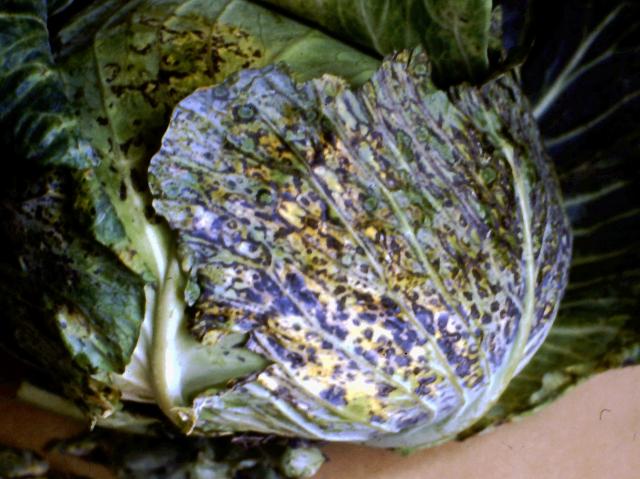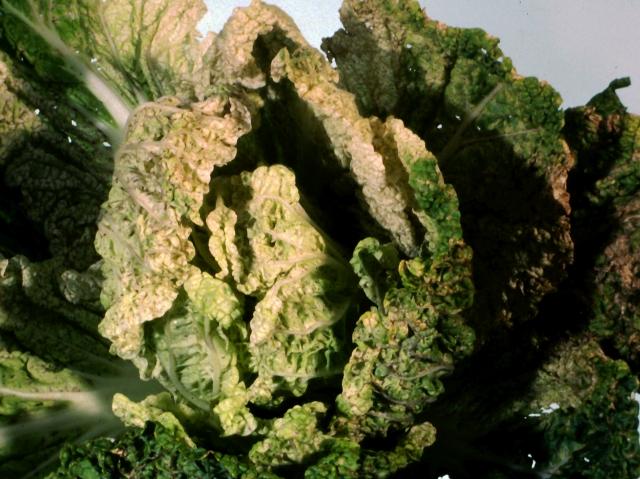Turnip mosaic virus (TuMV)
Hosts
All vegetable brassica crops are susceptible to TuMV (formerly called cabbage black ringspot virus) including broccoli, Brussels sprouts, cauliflower, cabbage and Chinese cabbage. Other susceptible crops include canola, lettuce, mustard and rhubarb.
The virus has a wide natural host range, including many weeds such as wild radish which can act as reservoirs for infection.
Distribution
TuMV occurs worldwide. In Australia, it has been reported infecting plants in many brassica growing areas. In Western Australia, it infects vegetable brassica and canola crops as well as certain weeds. Its incidence in canola and vegetable brassica crops is low.
Wild radish is the most important weed host identified so far in Western Australia.
Symptoms
Field
Severe mosaic symptoms commonly occur in leaves of infected plants. It also causes chlorotic (yellow) ringspots in young leaves. In older leaves, these ringspots develop into yellow or brownish spots surrounded by circular or irregular necrotic (dead) rings. Necrotic streaks, flecks and patches may also occur and plants can be deformed and stunted (Figures 1 and 2).
Stored cabbage
Infection occurs initially in the field, but necrotic spots may develop after harvest during storage. These symptoms are on internal leaves, only showing when an infected cabbage is cut open.
Spread
TuMV is transmitted by a wide range of aphids including green peach, turnip and cabbage aphids. Aphids pick up the virus from either TuMV-infected crop plants or nearby infected weeds and then spread it to healthy brassica crop plants. Climatic conditions that favour the build-up of aphid populations increase the spread of the virus.


